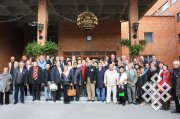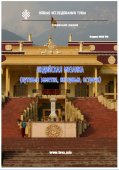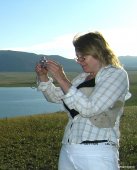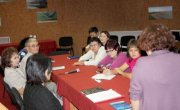 Every year, for one week, shamans from various regions of Russia and from other countries gather in Irkutsk region, which borders on Tuva, Krasnoyarsk Krai, Yakutia, Chita and Buryatia. They perform the most powerful of all existing rituals. And the goal is nothing more or less than to save the world! A correspondent of “Vesti” visited the convention this year…The place where the shamans meet is the Olkhon Island in the middle of Lake Baikal. This lake is called “the heart of Siberia”. According to legend, it was here where, long ago, the god of Heaven, Tengri, through his oldest and strongest son Khan Khute-Baabai, divulged the mysteries of shamanism to people. He chose the sacred Olkhon cape Burkhan as his dwelling place, tamed three eagles, and they carried the mystical knowledge to humans.
Every year, for one week, shamans from various regions of Russia and from other countries gather in Irkutsk region, which borders on Tuva, Krasnoyarsk Krai, Yakutia, Chita and Buryatia. They perform the most powerful of all existing rituals. And the goal is nothing more or less than to save the world! A correspondent of “Vesti” visited the convention this year…The place where the shamans meet is the Olkhon Island in the middle of Lake Baikal. This lake is called “the heart of Siberia”. According to legend, it was here where, long ago, the god of Heaven, Tengri, through his oldest and strongest son Khan Khute-Baabai, divulged the mysteries of shamanism to people. He chose the sacred Olkhon cape Burkhan as his dwelling place, tamed three eagles, and they carried the mystical knowledge to humans.
Tuva.Asia / The New Research of Tuva
 created with the support of Russian Scientific Fund for the Humanities (grant #09-03-12130в)
created with the support of Russian Scientific Fund for the Humanities (grant #09-03-12130в)















